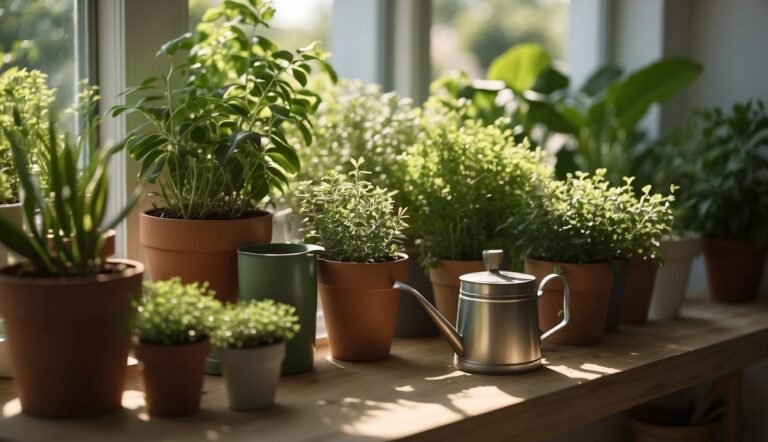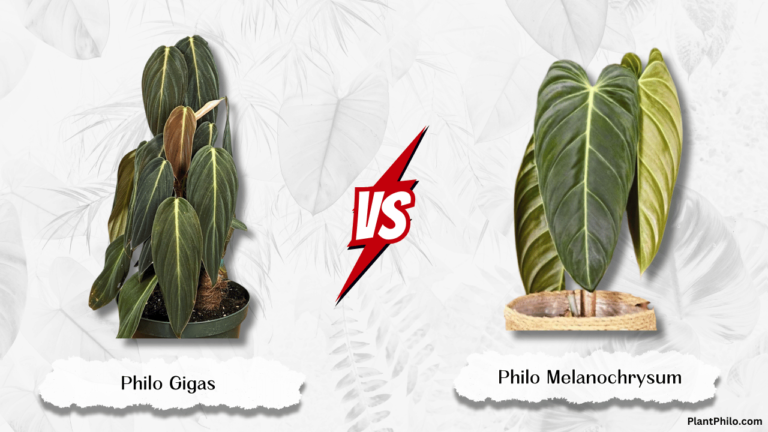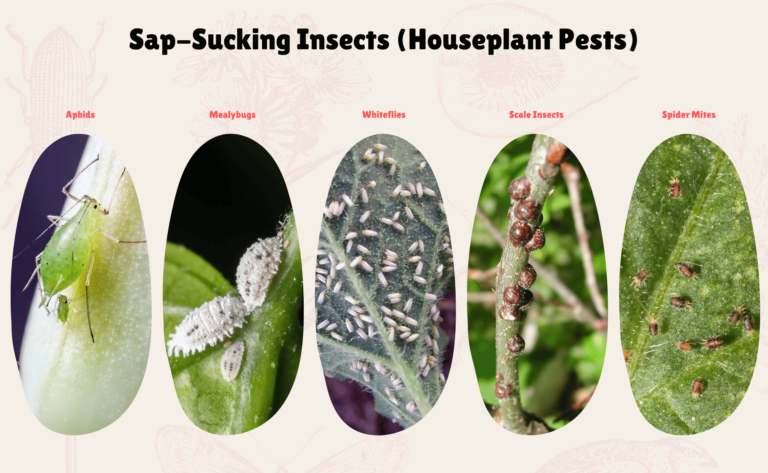Plowmanii Care Guide: Essential Tips for Healthy Growth
I have always admired unique houseplants, and the Philodendron Plowmanii stands out for its striking appearance and growth pattern. This plant can grow either in soil or attached to trees, making it versatile and interesting for plant lovers.
Philodendron Plowmanii features large, quilted leaves with silver splotches that add a beautiful touch to any indoor space.

When I started growing this plant, I noticed it thrives in warm, humid conditions, which matches the environment of most homes. The way it creeps along the ground, showing off its bold foliage, really makes it a conversation piece among my other plants.
There’s something satisfying about watching its lush leaves unfold from the central stem. For more details about its growth habits, you can learn more at this Philodendron Plowmanii plant care guide.
Overview of Plowmanii

Philodendron plowmanii is a unique and eye-catching plant known for its large, textured foliage and creeping growth. I find its leaf patterns and growth habits especially interesting for plant enthusiasts.
Botanical Classification
Plowmanii belongs to the Araceae family, which includes many popular houseplants. Its scientific name is Philodendron plowmanii.
This plant is part of a group of philodendrons known for their crawling, or “creeping,” habit, which means the stem grows along the ground. Unlike upright philodendrons, I see Plowmanii as a “repent” species because it develops a thick stem that travels horizontally.
This makes it a terrestrial or occasionally epiphytic plant, adapting well to a variety of environments. I appreciate that it can switch between rooting in soil and attaching to structures like trees.
Philodendron plowmanii is not a hybrid, but a naturally occurring species discovered in the wild. Its classification is well established among collectors and botanists.
Distinctive Features
One of the things I observe first about Plowmanii is its foliage. The leaves are heart-shaped, large, and deeply quilted, giving them a “corrugated” texture.
These leaves can grow wide and display striking silver or light green splotches alongside darker green, making for a bold contrast. As the plant grows, the leaves develop more intense color and texture.
When young, new leaves often appear iridescent and softer. Mature leaves become thicker and tougher.
The stems produce aerial roots, which help them creep and support the plant’s sprawling structure. The leaves have a semi-glossy surface, and the veins can be quite prominent, especially as the plant matures.
Below is a quick summary table of its distinctive traits:
| Trait | Description |
|---|---|
| Leaf Shape | Large, heart-shaped |
| Leaf Texture | Deeply quilted, semi-glossy |
| Leaf Color | Dark green with silver splotches |
| Growth Habit | Crawling/repent |
Natural Habitat
In the wild, I know Plowmanii is native to the rainforests of South America. Its natural range includes regions with high humidity, warm temperatures, and filtered sunlight.
I’ve learned that it often grows as a terrestrial plant, creeping along the forest floor, but can also adapt as an epiphyte. This species thrives in rich, moist soil and shaded conditions under dense tree cover.
Aerial roots allow it to climb or latch onto organic debris, rocks, or tree trunks. Its adaptation to both soil and epiphytic life enables flexible growth in various forest microenvironments.
The plant’s natural habitat influences how I care for it indoors. Replicating humidity and dappled light helps keep it healthy, and well-draining soil supports its creeping root system.
Plowmanii’s ability to produce aerial roots is a key survival feature in these jungle conditions. For more information on its habitat and features, I refer to details at Gardenia.net and The Spruce’s care guide.
Optimal Growing Conditions

When I grow my Plowmanii, I focus on three main factors: the right amount of light, the best soil mix, and keeping the temperature and humidity at ideal levels. These help the plant stay healthy and continue to thrive.
Light Requirements
I make sure my Plowmanii receives bright, indirect sunlight during the day. Direct sun can scorch the leaves, making them turn yellow or brown.
I place my plant close to a window with filtered light, such as through thin curtains or blinds. If my home does not get much light, I use an LED grow light to help the plant get enough energy.
It is important that my Plowmanii does not get too little light, or the stems will grow long and the leaves will look thin and stretched. I check for signs like leaf color fading or slow growth, which mean my plant may need more light.
Filtered light is best for this species, so I always avoid putting my plant right in the afternoon sun.
Soil Preferences
For the soil, I use a well-draining mix rich in organic matter. I avoid heavy or soggy soils because Plowmanii roots can rot if they stay wet for too long.
My favorite soil recipe includes peat, perlite, and a bit of orchid bark or compost to boost nutrients. Before watering, I always check that the top inch of soil feels dry.
If the pot does not have drainage holes, I repot my plant right away. Ideal soil helps keep roots healthy while holding some moisture, but not enough to drown them.
Using a potting mix enriched with organic matter also helps the plant grow faster and produce bigger, more colorful leaves.
Temperature and Humidity
I keep my Plowmanii in a warm room, usually between 70°F and 85°F (21°C to 29°C). I avoid sudden drops in temperature, which can stress the plant and cause the leaves to wilt or fall off.
I always keep the plant away from cold drafts or air conditioners. High humidity is important for healthy growth.
I try to keep the humidity level above 60%. If my home is dry, I use a humidifier, group my plants together, or place a tray of water near the plant to help with humidity.
Warm, humid air keeps Plowmanii lush and thriving indoors, making it an easy choice for most living spaces.
Cultivation and Care
To help my Plowmanii thrive, I focus on providing the right water, nutrients, and timely upkeep. These practices keep the plant healthy and maintain its attractive foliage.
Watering Routines
I water my Plowmanii when the top half of the soil feels dry. Overwatering can lead to root rot, so I always check the soil’s moisture by inserting my finger about two inches deep before each watering.
A good schedule is usually watering every 9 to 10 days if my plant sits in medium to bright indirect light and a well-draining potting mix. I avoid letting the soil get soggy.
In winter, I water less since growth slows and the plant needs less moisture. During hotter months, I check the plant more often, as it dries out faster.
I use lukewarm water to avoid shocking the roots. If the leaves droop or turn yellow, I watch for signs of both overwatering and underwatering.
Consistent checks help me keep a reliable routine that caters to the plant’s needs.
Fertilization Practices
My Plowmanii responds best to a balanced, water-soluble fertilizer with equal parts nitrogen, phosphorus, and potassium. I apply it once a month during the spring and summer, which are the main growing seasons.
Before applying, I dilute the fertilizer to half the recommended strength. This helps prevent salt build-up and reduces the risk of root burn.
I skip fertilizing in fall and winter, as the plant’s growth slows down, and too much fertilizer can harm the roots. I keep an eye on the foliage color and growth rate.
If new leaves are pale or the plant seems stunted, I consider adding a little more fertilizer the next time. Flushing the soil with water every few months prevents excess minerals from accumulating.
Repotting Guidelines
I repot my Plowmanii every 1 to 2 years, or whenever I notice roots coming out of the drainage holes or circling the pot. Using a chunky, well-draining mix of peat, perlite, and orchid bark encourages healthy root growth and good drainage, which is essential for this plant.
When I repot, I gently remove old soil and check for root damage, trimming any dead or mushy sections. I pick a container one size larger than the current one to avoid waterlogging while still giving space for new roots.
The best time for repotting is early spring, which gives the plant a boost as it enters its growing season. After repotting, I water the plant lightly and let it adjust in a shaded spot for several days before moving it back to bright, indirect light.
Pruning and Maintenance
I prune my Plowmanii mostly to remove yellow or damaged leaves. This helps the plant focus energy on new, healthy growth.
I always use clean, sharp scissors or pruning shears to reduce the chance of disease. If my plant becomes leggy or unruly, I trim stems back to a node, encouraging bushier growth.
Since it’s a crawling philodendron, I sometimes guide the main stem horizontally by adjusting its position in the planter. This supports better growth and larger leaves.
Regularly wiping the leaves with a damp cloth helps remove dust and keeps pests away. I watch for signs of pests such as spider mites or mealybugs and take action early if needed.
Consistent care and a bit of cleanup ensure my Plowmanii stays vibrant and healthy. For more specific tips on light or other conditions, I find resources like this Philodendron plowmanii care guide helpful.
Common Problems and Solutions
I often notice my Plowmanii facing issues like pests, fungal spots, and slow growth. Addressing these problems early helps keep the plant healthy and thriving.
Pest Management
My Plowmanii sometimes attracts common insect pests including spider mites, aphids, and mealybugs. These pests often hide under leaves and along stems where they feed on plant sap.
This can cause leaves to curl, yellow, or drop. To manage pests, I check the plant regularly.
If I see small webs, sticky residue, or tiny insects, I act fast. I wash the leaves with a gentle spray of water or wipe them with a damp cloth.
For stubborn pests, I use insecticidal soap or neem oil, making sure to cover both sides of every leaf. If pests keep coming back, it’s best to isolate the plant from others and repeat treatments weekly until the pests are gone.
For more tips, I use advice from guides like the list of common Plowmanii pests.
Disease Prevention
Root rot and fungal leaf spots are the most common diseases I see in Plowmanii plants. Root rot usually happens when the soil stays wet for too long.
Fungal leaf spots can look like small brown or black spots on leaves. To prevent these problems, I always use a pot with drainage holes and avoid letting water sit in the saucer.
I let the top inch of soil dry out before watering again. If I suspect root rot, I remove the plant from its pot, rinse the roots, and cut off any mushy or blackened parts with clean scissors.
In severe cases, I treat the plant with a fungicide to stop the spread of fungal or bacterial spots. More about these diseases is available at Philodendron Plowmanii care.
Troubleshooting Growth Issues
Growth problems with my Plowmanii are often caused by improper light, uneven watering, or poor nutrition. If leaves turn yellow, the cause is usually overwatering or poor drainage.
Slow growth or small leaf size can mean not enough light or nutrients. I keep my plant in bright, indirect sunlight.
If growth slows, I move it closer to a window but out of direct sun. I feed it with a balanced, water-soluble fertilizer every month during the growing season.
If leaf tips turn brown, I check for dry air or salt buildup in the soil and flush the pot with water. When I see any unusual symptoms, I quickly adjust care routines and refer to practical advice from online guides.
Frequently Asked Questions
I often hear from others who want to distinguish Plowmanii from similar plants or ask about its growth style and appearance. My answers focus on the specific traits, growth forms, maturity timeline, variegation, and propagation methods I’ve learned about Philodendron Plowmanii.
What are the distinguishing characteristics between Philodendron Plowmanii and Philodendron Mamei?
When I compare the two, I notice that Philodendron Plowmanii typically has large, heart-shaped leaves with strong, rippled texture and silver-gray veins. Philodendron Mamei also has heart-shaped leaves but shows more muted silvery blotches and less pronounced ripples.
Another difference I see is that Plowmanii’s petioles often have wavy edges, which is much less common in Mamei.
Is the Philodendron Plowmanii considered a climbing or crawling plant species?
Philodendron Plowmanii is a crawling or creeping species, not a climber. In my experience, it grows horizontally along the ground or across surfaces, with each new leaf emerging from a stem that moves along the soil.
This plant uses its rhizomes to creep rather than grow upward like some other philodendrons.
How does Philodendron Plowmanii differ from Philodendron Pastazanum in terms of growth and leaf morphology?
Philodendron Pastazanum also trails along the ground like Plowmanii, but its leaves are broader and have a more oval or shield-like shape. I find that Plowmanii’s leaves are more elongated with deeper ribbing and surface wrinkles.
Pastazanum tends to develop a smoother leaf texture and less pronounced petiole waviness compared to Plowmanii.
What does a mature Philodendron Plowmanii look like and how long does it take to reach maturity?
A mature Philodendron Plowmanii has large, dramatic leaves with deep ridges and wavy petioles. The leaf size can get quite impressive with proper care.
In my observation, it can take anywhere from 2 to 4 years for a Plowmanii to reach full maturity, depending on growing conditions.
What are the features of a variegated Philodendron Plowmanii and how rare are they?
Variegated Plowmanii show patches of cream, yellow, or light green along their leaves, in addition to the normal green and silver vein pattern. These color variations make them quite striking.
I rarely see true variegated Plowmanii; they are uncommon and often in high demand among collectors.
What are the best practices for propagating Philodendron Plowmanii?
I propagate Plowmanii by taking a stem cutting with at least one node and aerial root. I recommend placing the cutting in moist sphagnum moss or water until it develops roots.
Keeping the air humid and the medium slightly damp helps speed up root growth. Using clean, sharp tools is important to avoid rot and disease.
For more details on propagation, I sometimes review care guides like those on The Spruce.



